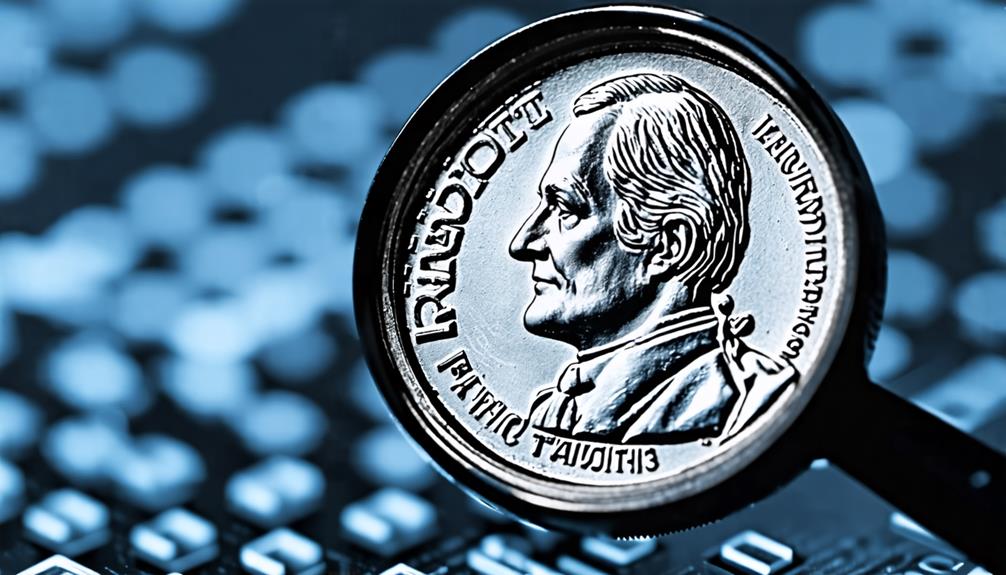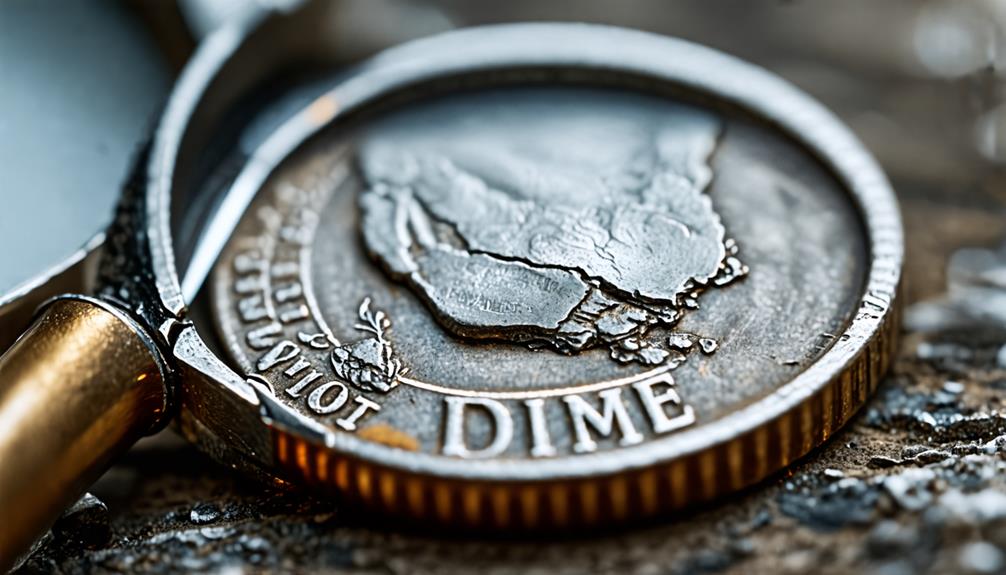You've probably noticed the ridges on the edge of a dime, but have you ever wondered why they're there? These tiny grooves aren't just for show; they're a remnant of a clever anti-theft measure from centuries past. Coin clipping, a practice that plagued currency for generations, once threatened the integrity of coins and economies alike. The solution? Those very ridges you feel between your fingers. But there's more to this story than meets the eye, and the reasons behind these textured edges might surprise you.
Key Takeaways
- Ridges on dimes were introduced to prevent coin clipping, a historical practice of shaving precious metals from coin edges.
- Reeded edges made alterations easily detectable, protecting the integrity and value of coins.
- The U.S. Mint implemented ridged edges on dimes in 1792 as an anti-counterfeiting measure.
- Coin clipping was once considered treason due to its severe economic impact.
Historical Context of Coin Clipping

For centuries, coin clipping posed a significant threat to economies worldwide, prompting governments to devise innovative solutions to protect their currency. You might be surprised to learn that this financial crime, prevalent from the 17th to 19th centuries, involved shaving off edges of gold and silver coins to extract valuable metal. The practice led to severe economic instability, forcing authorities to implement strict penalties. In Great Britain, coin clipping was even considered treason.
To combat this issue, reeded edges were introduced in the late 17th century, making alterations easily detectable. The problem wasn't confined to Europe; North American settlements faced similar challenges, necessitating secure coin designs to maintain economic integrity.
The widespread impact of coin clipping prompted governments to take drastic measures, such as implementing new taxes to address financial deficiencies caused by this deceptive practice.
Ridges as Anti-Counterfeiting Measures
The ridges on dimes serve as a clever anti-counterfeiting measure, carrying forward a centuries-old tradition of protecting currency integrity.
When the original U.S. coins were minted in 1792, they featured reeded edges specifically designed to deter coin clipping and counterfeiting. These ridges made it easier to detect altered coins, as any attempt to shave off precious metals would be immediately noticeable.
Even after the composition of dimes changed from silver to a copper-nickel blend in 1965, the Coinage Act maintained these reeded edges.
You'll find that this feature not only preserves the integrity of the currency but also provides a tactile way for visually impaired individuals to identify different coins.
Modern Relevance of Reeded Edges

Despite changes in coin composition and manufacturing techniques over the years, you'll find that reeded edges on dimes continue to play a significant role in modern currency.
While coin clipping isn't as prevalent today, these ridges still serve as a valuable security feature, making it easier to spot alterations and deter fraud. You'll appreciate how reeded edges help visually impaired individuals distinguish between similar-sized coins, enhancing accessibility in everyday transactions.
Moreover, these ridges contribute to the overall integrity and authenticity of modern coins. They make it challenging for anyone to tamper with the dime without leaving visible signs.
Although the original purpose of preventing debasing currency has evolved, the presence of reeded edges on dimes symbolizes ongoing efforts to protect our money. You can see how this seemingly small detail continues to play an essential role in maintaining trust in our coinage system.
Conclusion
You've learned about the fascinating history behind dime ridges.
They're not just decorative; they're a clever anti-theft measure.
Next time you're holding a dime, run your finger along its edge.
You're touching a piece of history that's still relevant today.
These ridges continue to protect against counterfeiting and help the visually impaired.
It's amazing how a small design feature can have such a big impact on our currency.

Leave a Reply